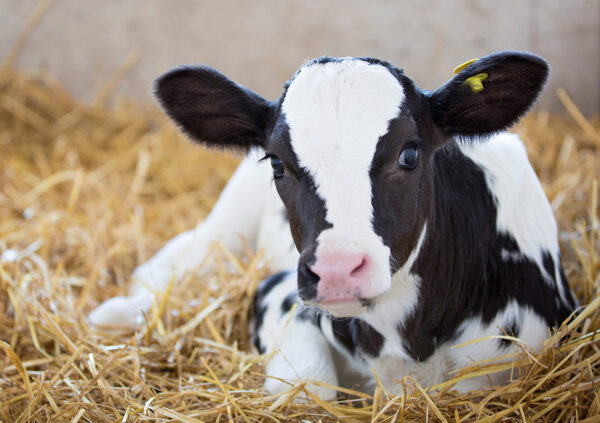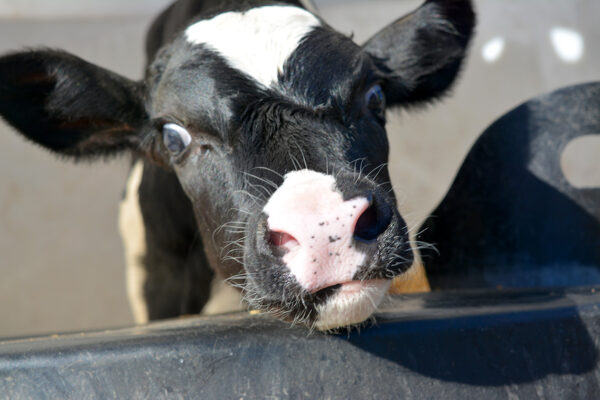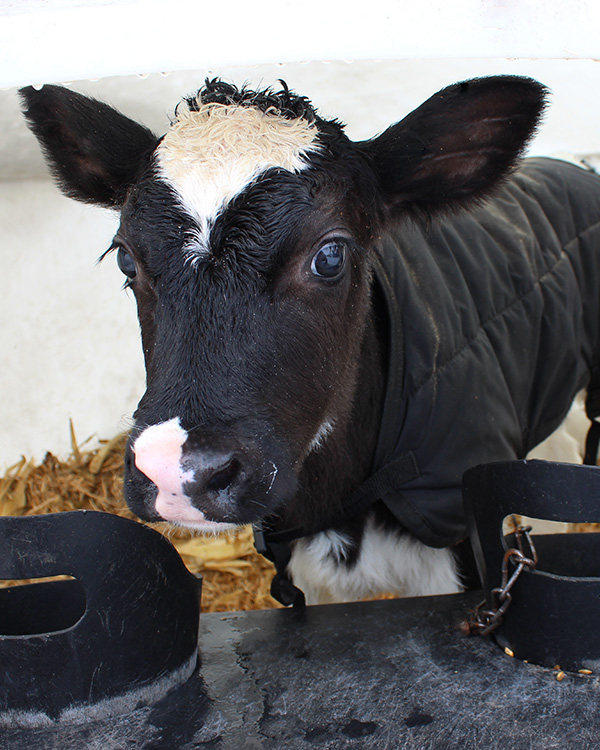Effective scours management involves more than replacing lost fluids
By Nathan Upah
Calf scours is one of the most important and costly calf health issues affecting dairy operations in North America. According to the USDA, scours, diarrhea and other digestive problems are responsible for more than half of all pre-weaned heifer calf deaths.
The National Animal Health Monitoring Survey attributes six in 10 deaths of calves under the age of 2 months to calf scours.
Financial losses are not measured solely by calf mortality; veterinary care, medications and increased labor to treat sick dairy calves are also costly. More importantly, scours impairs growth and reduces performance and overall profitability throughout the lifetime of the animal.
Calves that scour in the first 14 days of life are at a higher risk for mortality due to secondary infection during the first 90 days of life. According to Iowa State University, the normal cost of raising a heifer varies from $1,661.50 to an excess of $2,200 from weaning to calving. Those numbers are compounded when a calf scours, especially since it’s 2.5 times more likely to be culled earlier than its healthy counterparts.

Calf scours is caused by any number of micro-organisms. They range from viruses such as rotavirus or coronavirus to bacteria such as E. coli, salmonella or protozoa such as cryptosporidia. Scours can also be incited by nutritional challenges like changing dietary inputs, unpasteurized waste milk, transport and vaccinations.
Climatic factors such as wet environments, freezing temperatures and wind chill make calves particularly susceptible.
Whatever the cause, scours severely dehydrates newborn calves, whose bodyweight is around 70 percent water. Calves can lose 5 to 10 percent of their bodyweight in water within a single day of scouring. More than 14 percent loss of water can cause death. Unfortunately, once a calf starts scouring, replacing lost fluids is not enough.
An effective oral rehydration program must provide sufficient amounts of fluids, offer an effective solution for correcting acid-base balance and provide nutrition.
While dehydration significantly contributes
to the overall poor condition of calves,
it must be noted calves with diarrhea die from:
1. Acidosis
2. Septicemia
3. Hyperkalemia
4. Prolonged malnutrition (hypoglycemia)
5. Hypothermia
An electrolyte provided to scouring calves not only needs to drive the rehydration of the calves but must also address the associated conditions.
Geof Smith, DVM, from the college of veterinary medicine at North Carolina State University, has one of the largest bodies of research when it comes to key factors that affect the performance of oral electrolytes. Smith has identified seven key factors, which are listed in the sidebar.
In order to rehydrate calves and minimize on-farm labor requirements, calves must willingly drink an electrolyte solution. Calves are not starkly different than you and I in that we both enjoy repeatability and routine. We become accustomed to familiar smells, familiar tastes – and most of us enjoy our coffee shortly after we awake with the hope it is at least the same temperature each day.
Repeatability for calves is also key – timing, temperature and something from a taste profile that encourages intake. An important concern for treatment of scours is the acidic nature of the blood, caused by dehydration. Calves that suffer moderate to severe acidosis are less apt to eat and drink on a free-choice basis.

Providing alkalinizing agents early on to scouring calves is paramount in their survival from a scour-causing infection.
The challenge is: Those same alkalinizing agents that are life-saving aren’t exactly a pumpkin spice latte. Thus, treatment of scours with an oral electrolyte solution is an effort done in tandem with our knowledge of calf behavior. It’s our job to provide a flavor, taste and scientifically proven formula calves will find appealing.
Second, but just as important, consultation with the producer is necessary to make sure we are detecting and assessing dehydration early and correctly, and there is consistency in how the product is delivered.
Previously, our industry has thought about electrolytes largely one way: dry powders. Arguably, the dry powders acted as a hindrance in providing the calf with all the critical nutrients it needs to recover from scours. When formulas were developed that met the needs of scouring calves, the dry ingredients tended to react and form bridges and clumps in the packaging.
This impairs the user’s ability to deliver an accurate dosage of a homogenous electrolyte formula and can lead to increased mixing times necessary to solubilize clumps. This led the industry to combat these chemical reactions by separating the ingredients into multiple pouches or independent packaging. This avoids the caking and bridging but introduces another avenue for variability: potential mixing error, not to mention another product to inventory and reorder.
An all-in-one liquid electrolyte eliminates the concern of homogeneity, as all ingredients are already solubilized. Liquid oral electrolyte solutions address the concern of mixing error because of a simplified process. This allows for a more rapid and convenient delivery of the nutrients necessary to combat scours.
However, liquids present their own challenges from a formulation and manufacturing standpoint. Great care must be taken to ensure long-term shelf stability due to the aqueous nature of the product.
Calves are the future of any operation, however, scours can challenge calf health. Timely recovery from this disease is key. Not only is it important to know the key nutrients that will help calves recover, but it’s extremely critical to understand the concentration in which they are supplied.
Scouring calves need fluid therapy, but what that fluid delivers can be the difference between life and death. Proper rehydration results from the supply of key nutrients at the proper osmolarity with the right alkalinizing agents to keep your animals drinking, eating and producing.

The obvious losses are in lower overall milk production and decreased components, lowering the value of the milk produced. A lagging, but very costly, result of heat stress is reproduction losses. Not only are conception rates decreased and early pregnancy losses increased, when the cows do become pregnant in the fall, they are set up to get on the roller coaster next lactation during the hot summer months. Perhaps, less obvious is the insidious increase in health events and lameness that can lead to unexpected early removal from the herd. Are you prepared to mitigate the effects of heat stress?
